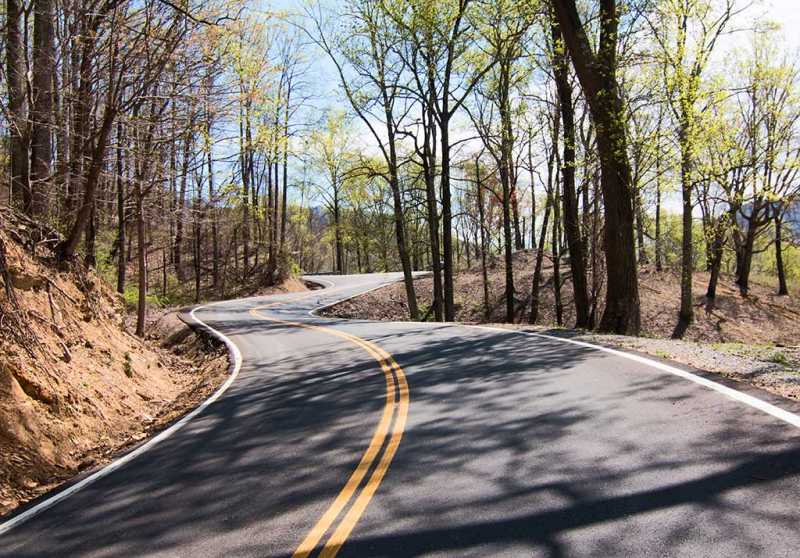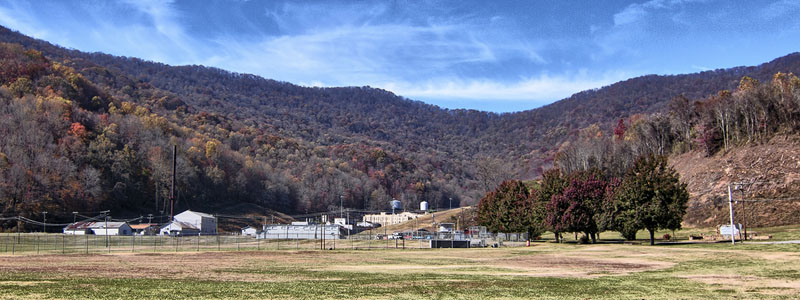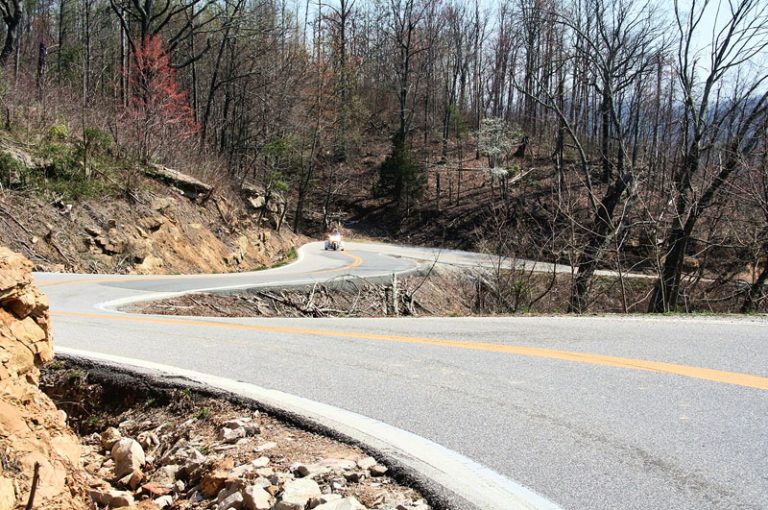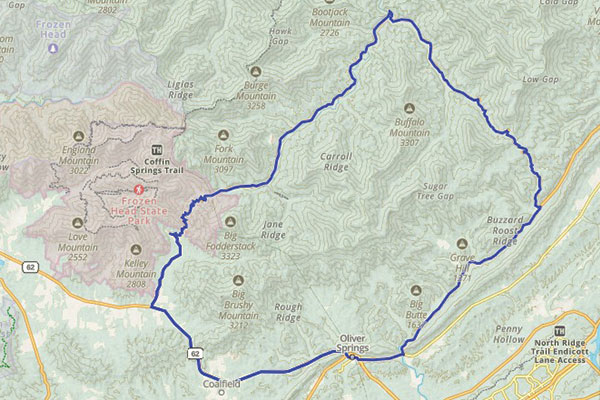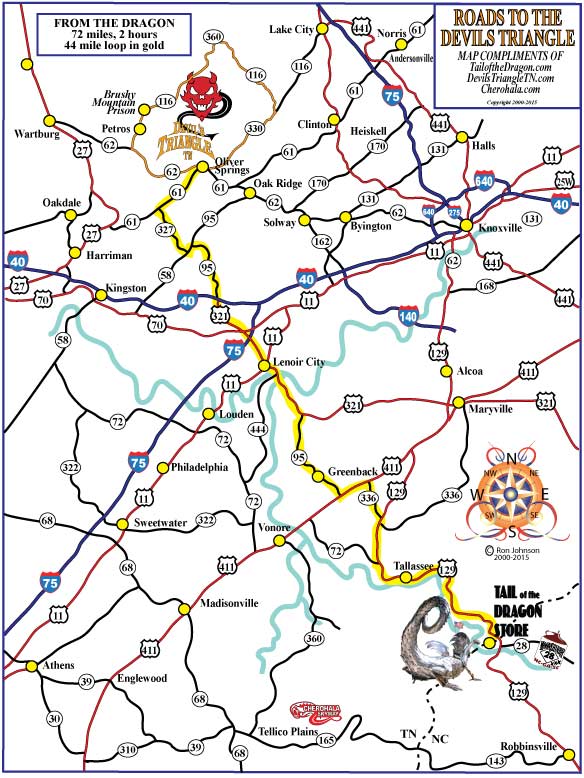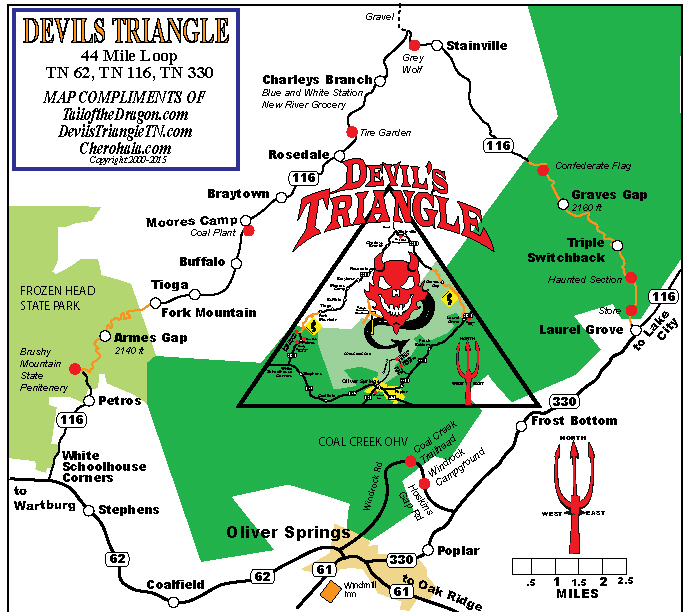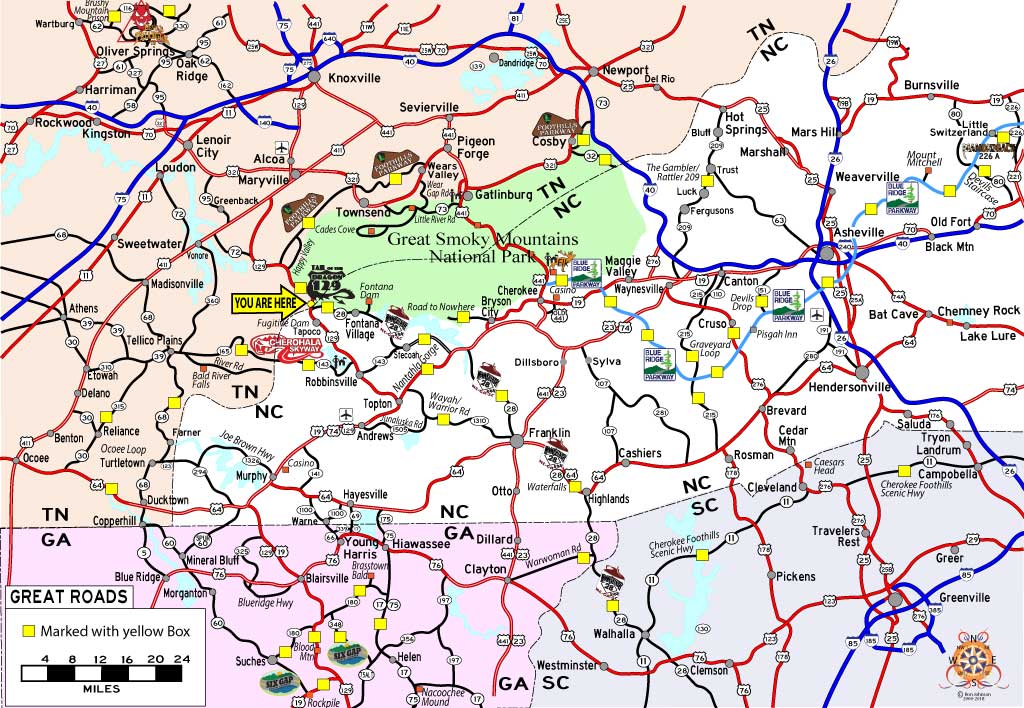Devils Triangle
Written By Ron Johnson
Edited By Jessica Green
Devil’s Triangle is a 44-mile loop composed of TN 62, TN 116, and TN 330. Located in the mountains of the Cumberland Plateau just north of Oak Ridge, TN. Devil’s Triangle features some of the most unusual two-lane twisty roads in eastern Tennessee. The area has experienced cycles of boom and bust, tragic mining disasters, and also housed historic prisoners at Brushy Mountain State Penitentiary.
The route takes you through bucolic rural Tennessee and historic tourist sites, linked by dragon-like twisties and gentle sweepers. Motor enthusiasts are drawn to Devil’s Triangle for its adrenaline-pumping curves, scenic views, and unique hazards, including gullies, steep drop-offs, and guardrails.
Starting at TN 62 and traveling clockwise, you have eight easy miles to TN 116, where you turn right at Schoolhouse Corner and pass through the small town of Petros (pronounced Pee-tross). There is a crossroads store and gas station where many riders stop for fuel, as it is more than 30 miles to the next gas station.
Rounding a large right turn, you begin climbing from 1,400 feet to Armes Gap at 2,150 feet in the next two miles. The pavement here is good, and the twisties are intense—beware of the guardrails and rock outcroppings. At Armes Gap, the road suddenly descends to 1,600 feet in just 1.5 miles.
The bottom connector on the Triangle is TN 330 and TN 62. You can regain your composure on these more typical stretches of asphalt, which may feel rather straight and unexciting after riding the northern section.
More Activities Along the Route:
- Historic Brushy Mountain State Penitentiary – Opened in 1896, today a popular tourist attraction open to the public
- Windrock Park – The largest privately owned off-road park in the country located in Oliver Springs, TN
- Oak Ridge, TN – Town filled with history, activities and lodging
Tips for the Best Travel Experience:
- Devils Triangle can have gravel or debris on the road from local driveways and ATV activity
- Avoid riding in winter months or during heavy rain
- Fill up your gas tanks before starting, there are limited gas stations along the route
Devils Triangle History
Written By Ron Johnson
Edited By Jessica Green
The Oliver Springs/Oak Ridge area of Tennessee has a rich and varied history shaped by Native American heritage, early settlers, dangerous mining operations, dramatic prison escapes, and groundbreaking nuclear development.
Native Americans once thrived in this region, drawn to its abundant game and natural springs—known to them as “healing waters.” European exploration began in the 1760s, though permanent settlements didn’t take hold until the late 1700s.
Oliver Springs is one of the few towns along the Devil’s Triangle route. It is uniquely situated at the convergence of three counties—a geographic oddity. The town was named for Richard Oliver, its first postmaster and innkeeper in 1826. By the late 1800s, Oliver Springs had become a fashionable destination for travelers seeking the curative properties of its mineral springs. A large hotel served wealthy guests arriving by rail. The hotel burned down in 1905 and was never rebuilt, ending the town’s reputation as a resort destination.
Coal mining took off in the 1870s and became the main industry in the region. In 1891, local miners rebelled against the state’s practice of leasing convicts to work in the mines—a protest known as the Coal Creek War. Hundreds of miners stormed the prison in Briceville, freed the inmates, and sent them by train to Knoxville. Escalating tensions led to more raids, including one on the Cumberland Mine in Oliver Springs. In response, the Tennessee Legislature outlawed convict leasing in 1896 and established Brushy Mountain State Penitentiary.
Several mining disasters devastated the area in the early 1900s. In 1902, an explosion at the nearby Fraterville Mine killed 216 miners—wiping out nearly the entire male population of the town. Today, a monument and 89 graves honor the victims. In 1911, 84 more miners lost their lives in the Cross Mountain Mine explosion.
Brushy Mountain State Penitentiary opened in 1896. Originally a wooden structure, the prison was rebuilt from stone in the 1920s. Its remote location in the rugged mountains made escapes difficult. The most infamous was in 1977, when James Earl Ray—the convicted assassin of Dr. Martin Luther King Jr.—escaped with six others. He was recaptured two days later just a few miles from the prison. Brushy Mountain closed in 2009 and was sold in 2014. Today, it operates as a tourist attraction offering guided tours and events.
In 1942, the U.S. government acquired land south of Oliver Springs for the Manhattan Project and the development of the atomic bomb. The project brought economic growth, but by the 1990s much of the government-related employment had disappeared, leaving the local economy struggling.
In 2000, the Tennessee Valley Authority, in partnership with Coal Creek Mining and Manufacturing, began building wind turbines on Buffalo Mountain, which bisects the Triangle from north to south.
Today, the resurgence of motor tourism along the Devil’s Triangle has helped breathe new life into this once-forgotten corner of Tennessee. While mining still exists, many former coal fields have been transformed into off-road destinations like Coal Creek OHV and Windrock ATV park—now popular with outdoor enthusiasts and adventure riders alike.

